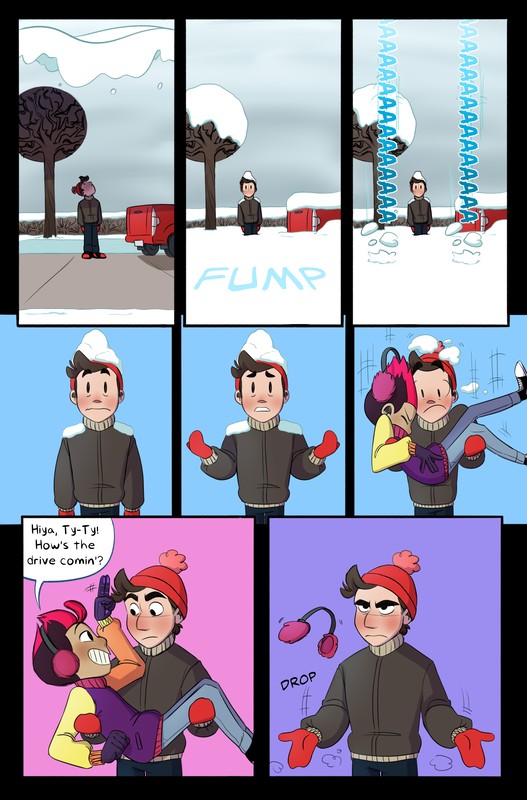We were lucky to catch up with Ashley Michelle Simpson recently and have shared our conversation below.
Ashley Michelle, thanks for taking the time to share your stories with us today I’m sure there have been days where the challenges of being an artist or creative force you to think about what it would be like to just have a regular job. When’s the last time you felt that way? Did you have any insights from the experience?
Like any occupation, there are good days and bad days. Most of the time, mine come at the end of a contract. I’m working in the US on a work visa from Canada, so like anyone else on one, there’s always that scare that you may not have work lined up for you after the current project is completed. Having to uproot yourself is daunting and stressful to think about. I have worked as a dishwasher and even a librarian for nearly ten years before I had the job I have now, and the bad days had different causes.
I certainly can count more good days than bad, though! I get to draw characters I never thought I’d see myself draw on a regular basis, and I still get to make people happy watching shows I helped bring to life. Definitely rewarding!



Great, appreciate you sharing that with us. Before we ask you to share more of your insights, can you take a moment to introduce yourself and how you got to where you are today to our readers.
A Storyboard Artist bring the script to life. We get the words and translate them into visuals. Sometimes, we’re tasked with figuring out how something will or will not work on screen. Some shows are board driven, where the Storyboard Artist must write and draw the episode. I went to an art university in Canada to get my degree in Media Arts (or Animation) in order to be able to work here in the US as a Storyboard Artist. While it’s not necessary for people in the US to go to school in order to work in this industry, since I’m not an American citizen it was important to prove that I was qualified for the job.
The way I got into the industry was a rather unique one, where I gave some fanart to show creators and I was asked to join their team, first as a freelance Character Designer and then as a Storyboard Artist. I work most of the time on comedy, and my absolute favourite things to storyboard are song sequences. Something about timing a character’s actions to a rhythm makes me so excited.
While I work full-time, I also draw fanart, original art and my own comics on the side.


Have you ever had to pivot?
I grew up in rural Manitoba, Canada, and went to school in the french school division of the province. It was a very common thing to believe that artists never made a living. Since I loved writing and going to the library, I started working there, and figured I would go to school to study Library Sciences (yes, that’s a real thing!). It was during that first year of university that everyone at school and at work told me to get into Animation instead. I quit studies after a year, went to work as a library page (or shelver) and went back to high school to take Grade 12 Art. I got into a university in Vancouver, BC, and there I learned that it would be much easier (albeit still a challenge since it’s a competitive industry) to get a job as a professional artist than I grew up believing.
I still love libraries and I still remember how the shelving systems work in both public libraries and university libraries, but I don’t miss the pain putting away hundreds of books brought to my hands!



How can we best help foster a strong, supportive environment for artists and creatives?
Stop stealing art, stop reposting without credit or permission, and most importantly stop using AI. It’s already a difficult industry, with fans demanding more and more from artists and show runners, expecting we can make their perfect show/book/piece. Now, people who wanted us to draw their characters for free because they couldn’t do it, expect to be treated better because they can feed a command to an AI and “created” a work of art. Same goes for anyone writing a story/song/literally anything with AI.
Using AI as reference is one thing. Sometimes, you can’t visualize something in your head, so I believe AI can help in that regard. But to post it as a piece one created when it’s really a hodge-podge of works from various artists who worked for years to get where they are now, it’s just a slap in the face. Be kind, be curious, ask us questions about how we got where we are now. If you can’t support artists with money, get word out about them, how they inspire you, what about their works helped you, or made you feel better in a time you needed a shoulder to lean on.
Practice. I promise, you’ll be able to draw hands better than any AI could.
Contact Info:
- Website: http://www.ashleymichellesimpson.com/
- Instagram: https://www.instagram.com/ash_michelle_sims/
- Linkedin: https://www.linkedin.com/in/ashleymmsimpson/
- Twitter: https://twitter.com/ashmichellesims
- Other: https://linktr.ee/kicsterash


